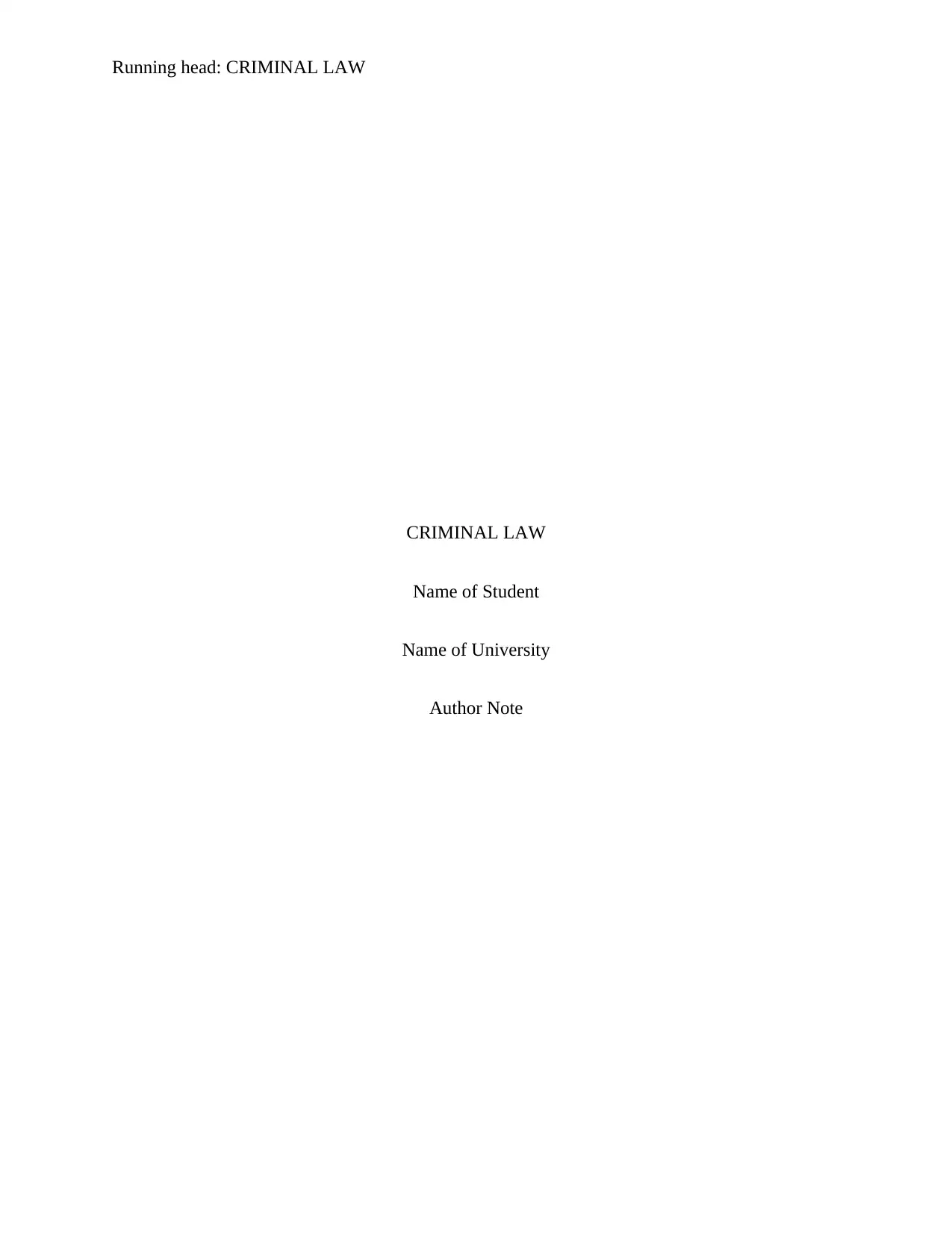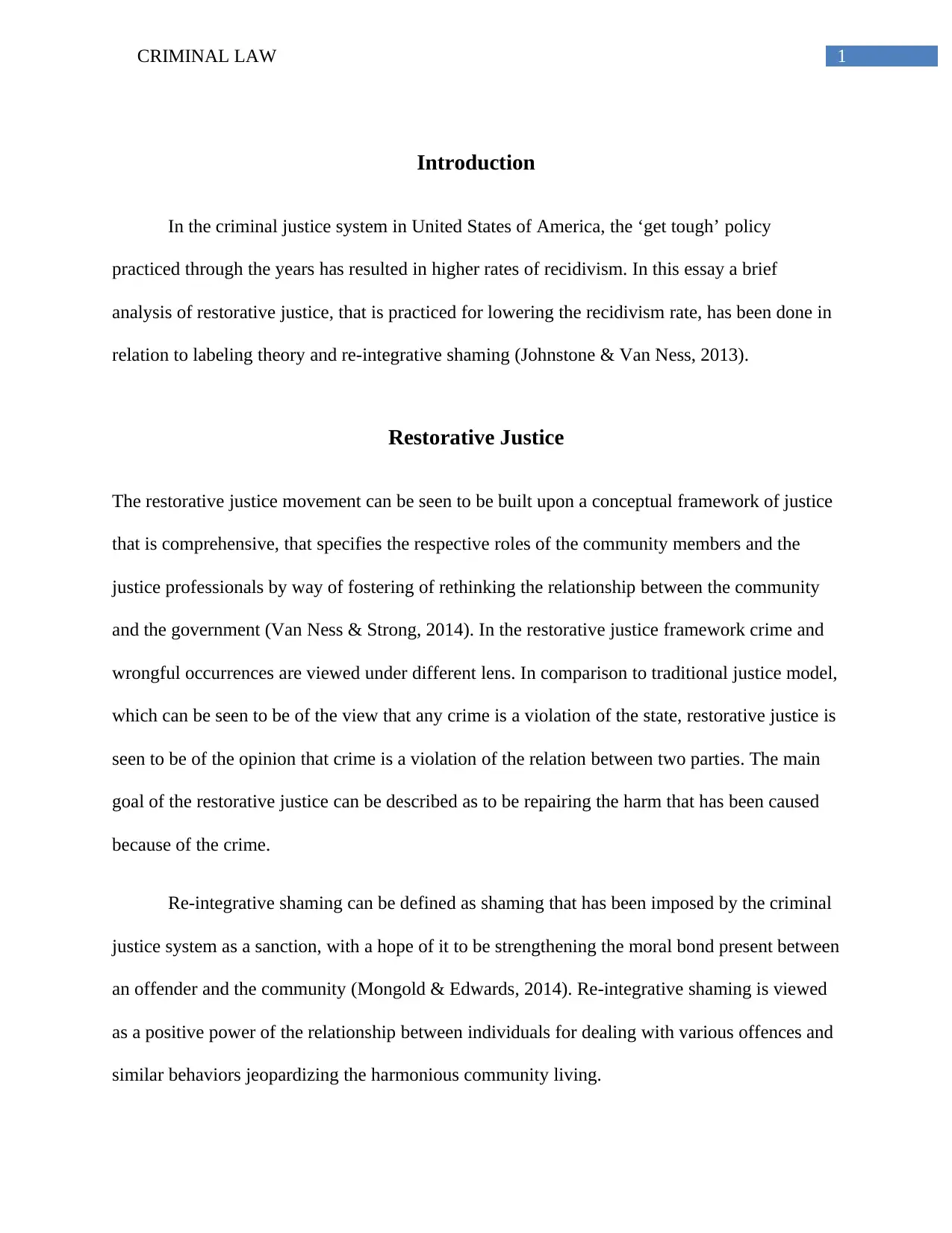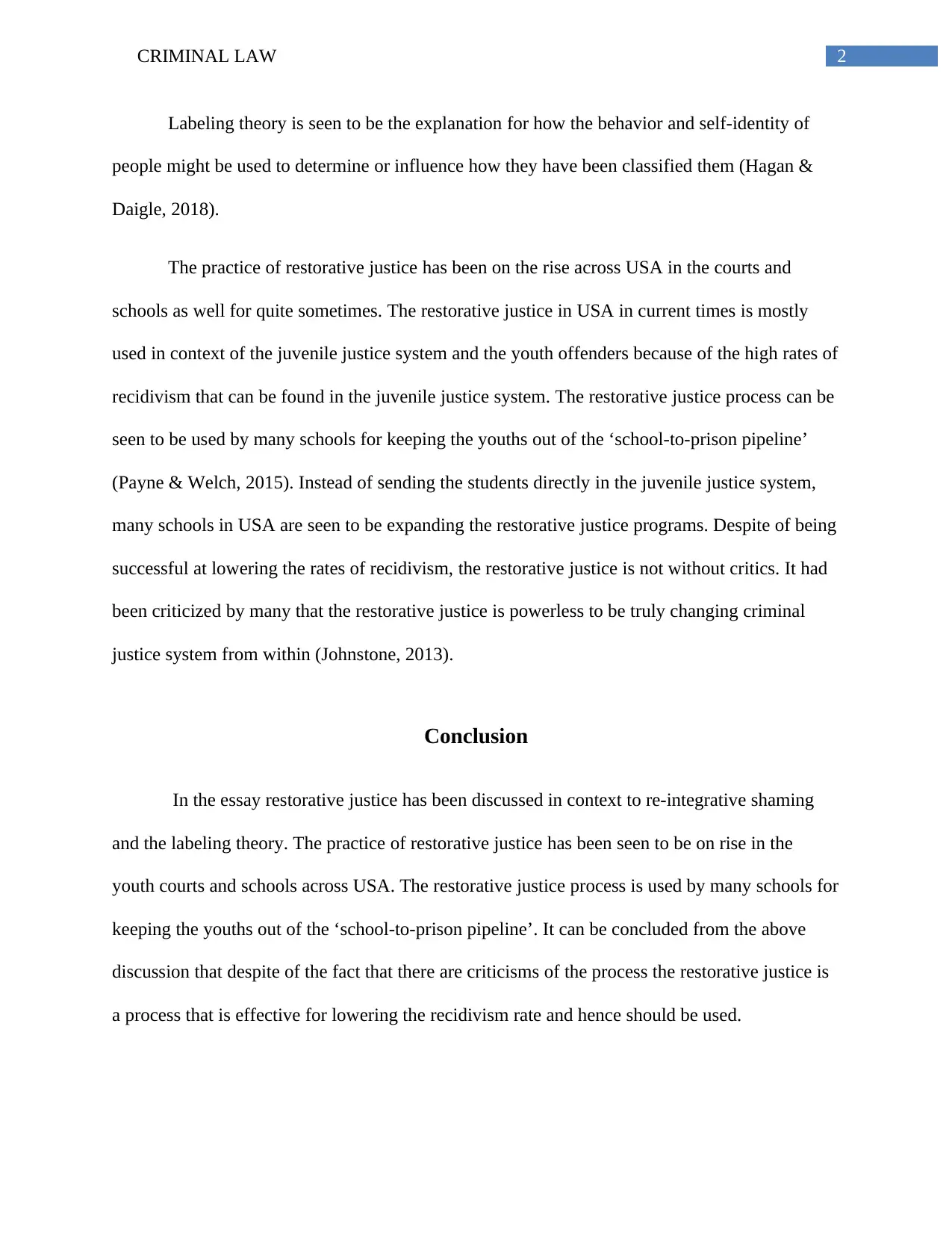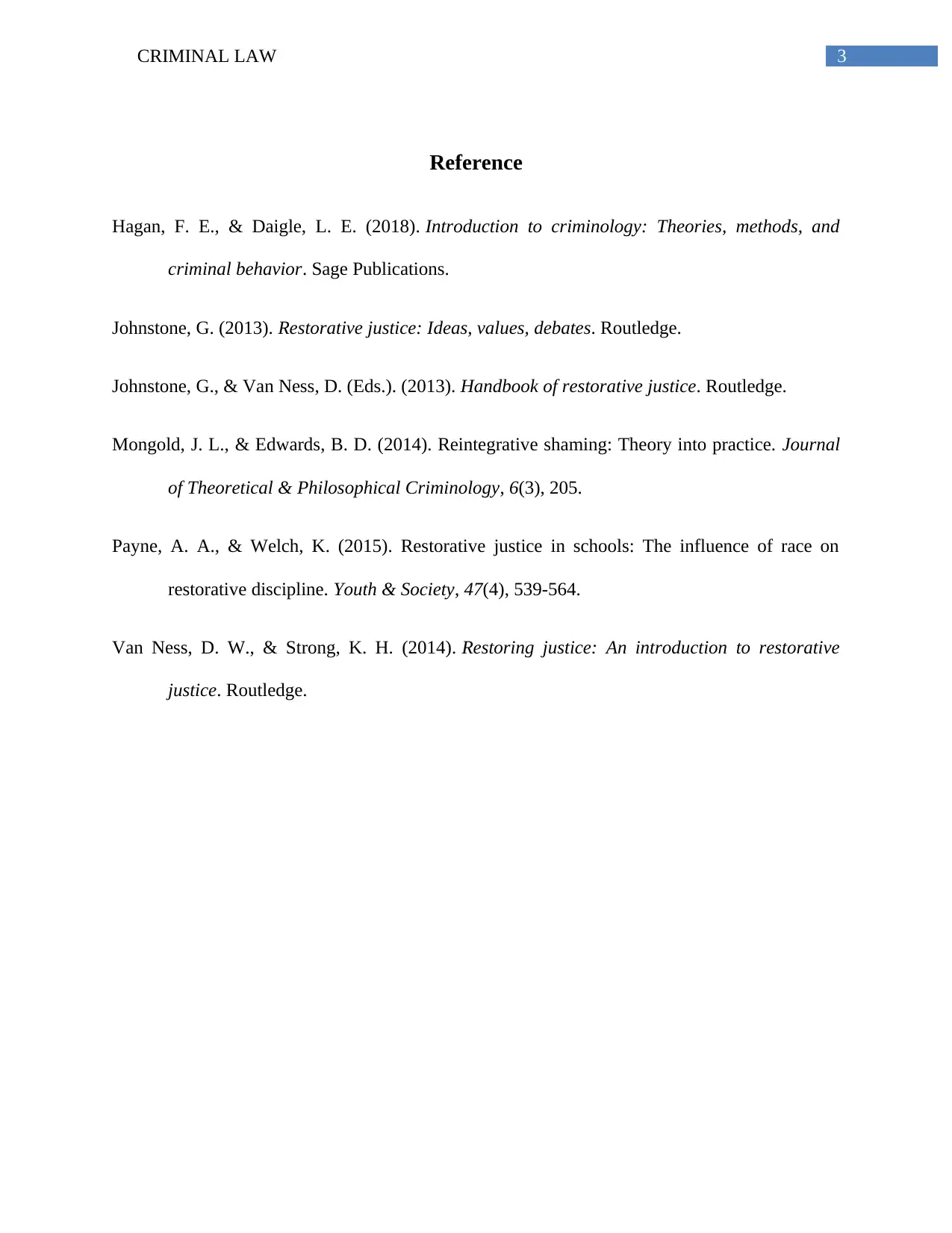Criminal Law 3: Restorative Justice, Labeling Theory, and Recidivism
VerifiedAdded on 2022/09/17
|4
|781
|27
Essay
AI Summary
This essay analyzes restorative justice within the context of the criminal justice system in the United States, particularly focusing on its relationship with labeling theory and re-integrative shaming as strategies to reduce recidivism rates. The essay defines restorative justice as a comprehensive framework that reconsiders the relationship between the community and the government, emphasizing repairing harm caused by crime. It contrasts restorative justice with the traditional model, highlighting the former's focus on the violation of relationships. The essay also explains re-integrative shaming and labeling theory. The application of restorative justice in juvenile justice and schools is discussed, including its use in keeping youths out of the 'school-to-prison pipeline'. While acknowledging criticisms, the essay concludes that restorative justice is an effective process for lowering recidivism rates and should be utilized.
1 out of 4











![[object Object]](/_next/static/media/star-bottom.7253800d.svg)